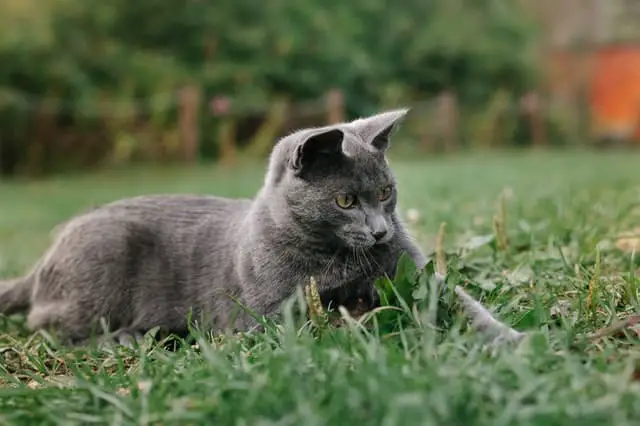Cats do not see in black and white, but they do distinguish fewer colors and their daytime vision is more blurred than human

How do cats see the world? Do cats only see in black and white? Can Cats See in the Dark? Our eyes have many things in common with those of felines. After all, we are both mammals. However, the cat’s eyes hide surprising mysteries, as they have adapted to hunt in the dark. Did you know that your furry friend’s field of vision is wider than that of humans? Do you know why huge feline eyes focus worse up close? Here are seven surprising cat eye mysteries you need to know.
1. How do cats see? Your field of view is wider
The field of vision is the area that we see when our eyes focus on a specific point. It includes what we observe from the front, but also what we visually capture above, below and to the sides of the point in focus.
Well, here is a first revelation for beginners in feline vision: the eyes of cats pick up a greater field of vision, wider, than what we humans perceive . ” Cats have a field of vision of 200 degrees, compared to 180 degrees for people.
2. Cats see up to eight times better in dim light.
The eyes of cats have evolved to provide our felines with great help during night hunting. The wild ancestors of our current domestic cats needed to maximize their hunting time as much as possible, so their eyes adapted to see even in minimal dim light.
This need has caused major changes in the structure of feline eyes and explains why our cats see six to eight times better than we do in the dark .
3. The eyes of cats are larger, compared to humans
One of the most striking transformations that the need to hunt , and to prolong this activity for a greater number of hours of the day, caused in the eyes of cats is the increase in the size of their eyes.
The eyes of cats are very large for the size of their heads, if we compare them with humans. In fact, if you look at it, there is not that much difference in size between the eyes of cats and humans.
4. Cats see blurrier in the daytime.
The light receptor cells housed in the eyes of cats, and responsible for vision, are also somewhat different from ours. Although humans and felines share the same type of vision cells ( rods , for black and white vision in dim light, and cones , to distinguish colors in bright light), these are not distributed in the same way: in the eyes of cats dominate the rods, while in humans the cones are more numerous.
The differences do not end here. These rods from the eyes of cats do not connect directly to an ocular nerve, as they do in people. Rather, they connect to each other first, forming small groups of cells.
This organization allows them to see better in semi-darkness or semi-darkness , where human eyes are practically useless. But it does have some drawbacks: During the day, the cat’s eyes do not send detailed information about which rods are stimulated to the brain. For this reason, their daytime vision is more blurred than ours, as can be seen in the second photographs of this series.
6. Cats don’t see in black and white
Cats do not show a special interest in colors. In fact, the obsession with color is rare in mammals, except for primates, and especially people.
Humans have three types of color receptor cone cells in our eyes: red, green and blue . However, cats, like dogs, lack the red cone , and that is why they only see colors like blue, green and yellow; while they can be considered blind for reds or pinks. Cats do not perceive colors as vivid or as saturated as we do.
7. Difficult approach up close
Having such large eyes implies other difficulties for our furry life companions: these are not so easy to focus on . Humans have muscles in our eyes that distort very close objects, in order to allow us to see them better.
However, for cats, this is more complicated: their eyes function like a huge SLR camera lens, more difficult to handle. In other words, your near vision isn’t always as good as ours .
Fortunately, cats have another unexpected ally to improve their near vision: their whiskers.







